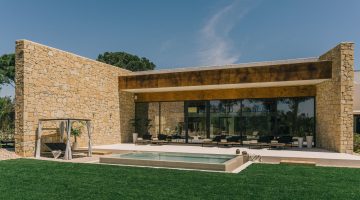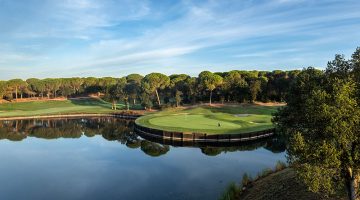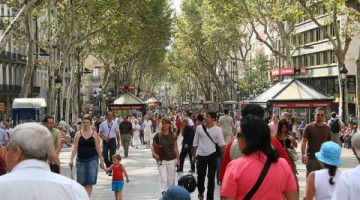 Antoni Gaudi born in Reus in 1852 was a celebrated Catalan architect whose modernist work has shaped the Barcelona we know and love today. His unique and distinctive style is admired and renowned by architects all over the world.
Antoni Gaudi born in Reus in 1852 was a celebrated Catalan architect whose modernist work has shaped the Barcelona we know and love today. His unique and distinctive style is admired and renowned by architects all over the world.
Gaudi spent much of his childhood avoiding school and immersing himself in plants and nature – influences that became prominent in his work. As the first in four generations of metal workers to leave the family tradition, Gaudi went on to study architecture in Barcelona and graduated in a city full of artists, intellectuals and the bourgeoisie. After showing his work at the Paris World Fair in 1878 Gaudi met Eusebi Guell who went on to be a great influence in his career.
Gaudi’s designs always differed from the work around him – working in the modernist era, his work was greatly influenced by forms of nature. The combination of original design, interesting shaped stonework, twisted metal work and vibrant colours give the viewer a truly breathtaking visual experience and draw visitors from all over the world to come and admire it year after year.
With nine of Gaudi’s buildings declared UNESCO world heritage sites we thought we would look more closely at three of Gaudi’s most famous works in Barcelona:
Sagrada Familia
 La Sagrada Familia is Gaudi’s most famous work and is (unbelievably) still unfinished! Despite this the Roman Catholic Church has been awarded UNESCO world heritage status and is a must-see tourist destination for visitors to the city. Gaudi started building in 1882 and since his death in 1926 work has been continuing with the help of various different architects. The use of irregular shaped stones, a favourite technique of Gaudi’s has proved challenging for all involved.
La Sagrada Familia is Gaudi’s most famous work and is (unbelievably) still unfinished! Despite this the Roman Catholic Church has been awarded UNESCO world heritage status and is a must-see tourist destination for visitors to the city. Gaudi started building in 1882 and since his death in 1926 work has been continuing with the help of various different architects. The use of irregular shaped stones, a favourite technique of Gaudi’s has proved challenging for all involved.
Gaudi’s original design called for a total of eighteen spires which he hoped would represent the Twelve Apolostles, the Four Evangelists, the Virgin Mary and Jesus (intended to be the tallest). On completion these spires will not only give La Sagrada Familia the tallest spire in the world but will also make it the tallest church building in the world.
The Church will be made up of three grand facades; the Nativity to the East, The Passion to the West and the Glory to the South. The Nativity facade was completed before the interruption of work and certainly holds the most Gaudi influence made up of several hallways and intricate stone work. The Passion facade includes emaciated figures of Christ on the crucifix which have caused a certain degree of controversy and The Glory facade which has yet to be completed and will be the largest of the three. The Glory facade will ultimately represent the ascension to God, including elements such as the Seven Deadly Sins and the Seven Heavenly Virtues.
Park Guell
 Park Guell is another of Gaudi’s works that has been declared a UNESCO world heritage site. The plot originally bought by Eusebi Guell, a strong influence in Gaudi’s early career, was intended to be a ‘garden-city’ for the rich in Barcelona and Gaudi was commissioned to design it. Positioned high in the hills away from the smokey city air and affording buyers with stunning views of the city it didn’t prove as popular as hoped when only a few land plots were sold, however work still began on designing the park. Construction began in 1900 with Gaudi taking great care to ensure the architecture and structure cooperated with nature. The Park is intended to create a feeling of calm and tranquillity, mixing harmoniously architecture and nature; walkways are supported by twisting rock pillars that seem to be growing out of the ground like tree trunks. The main focal point of the park is the terrace with Gaudi’s signature eye catching mosaic tiling adorning the walls and offering visitors stunning views of the city.
Park Guell is another of Gaudi’s works that has been declared a UNESCO world heritage site. The plot originally bought by Eusebi Guell, a strong influence in Gaudi’s early career, was intended to be a ‘garden-city’ for the rich in Barcelona and Gaudi was commissioned to design it. Positioned high in the hills away from the smokey city air and affording buyers with stunning views of the city it didn’t prove as popular as hoped when only a few land plots were sold, however work still began on designing the park. Construction began in 1900 with Gaudi taking great care to ensure the architecture and structure cooperated with nature. The Park is intended to create a feeling of calm and tranquillity, mixing harmoniously architecture and nature; walkways are supported by twisting rock pillars that seem to be growing out of the ground like tree trunks. The main focal point of the park is the terrace with Gaudi’s signature eye catching mosaic tiling adorning the walls and offering visitors stunning views of the city.
Gaudi actually ended up making the park his home living in one of the only properties within it up until his death in 1926. It therefore contains original works by Gaudi and several of his collaborators and is now the Gaudi Museum (Casa Museu Gaudi). In 1969 it was declared a historical artistic monument of national interest.
Casa Batlló
 A third piece of Gaudi’s work to be declared a UNESCO world heritage site is Casa Batllo positioned on one of the main shopping streets in Barcelona, Passeig de Gracia. Built for a wealthy aristocrat, who only ended up living in one of the floors, the architecture to an admirer looks like it has been put together with skulls and bones. When looking at it more closely you can see that the ‘skulls’ are actually the balconies and the ‘bones’ are the pillars. He used marine colours as his inspiration so the facade is the colour of coral, and is adorned with Gaudi’s signature mosaic in shades of gold, orange and greenish blues. With modern lighting being projected onto the facade at night the colours look even more vibrant and alluring.
A third piece of Gaudi’s work to be declared a UNESCO world heritage site is Casa Batllo positioned on one of the main shopping streets in Barcelona, Passeig de Gracia. Built for a wealthy aristocrat, who only ended up living in one of the floors, the architecture to an admirer looks like it has been put together with skulls and bones. When looking at it more closely you can see that the ‘skulls’ are actually the balconies and the ‘bones’ are the pillars. He used marine colours as his inspiration so the facade is the colour of coral, and is adorned with Gaudi’s signature mosaic in shades of gold, orange and greenish blues. With modern lighting being projected onto the facade at night the colours look even more vibrant and alluring.






